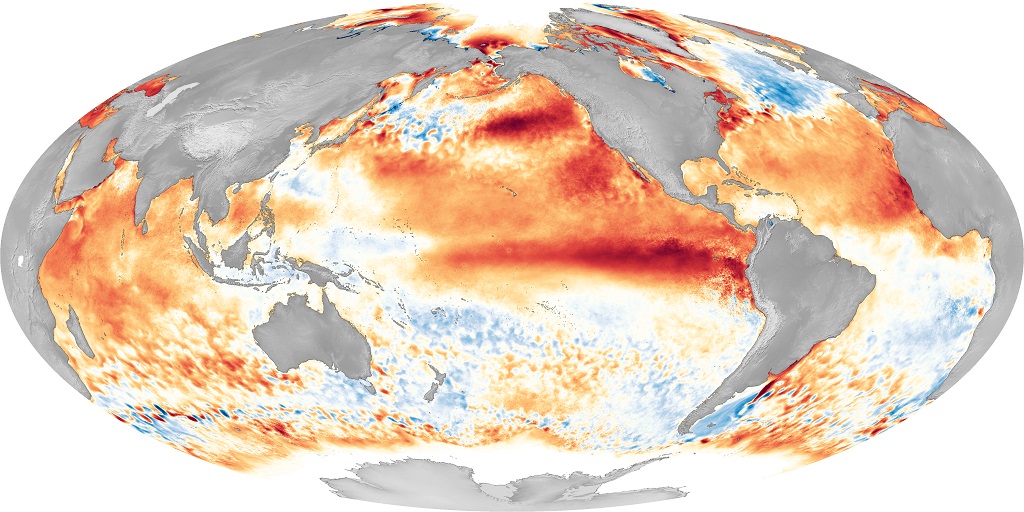The El Niño weather phenomenon is back on the radar. A new update from the World Meteorological Organization (WMO) forecasts that there is a 90% probability of the El Niño event continuing during the second half of 2023.
 SourceMoneyGuru-https://www.mgkx.com/5120.html
SourceMoneyGuru-https://www.mgkx.com/5120.html
What is the El Niño phenomenon?
The El Niño Southern Oscillation (ENSO) is an oceanic-atmospheric phenomenon with origins in abnormal variations in surface water temperatures in the Central and Eastern Pacific (Latin American coast). It comprises two opposing phenomena (La Niña and El Niño) that historically occur every 2 to 3 years. La Niña brings colder, wetter weather (lasts between 1-3 years), while El Niño brings warmer, drier weather (lasts between 9-12 months).SourceMoneyGuru-https://www.mgkx.com/5120.html
Typical impacts of El Niño
When El Niño starts picking up, trade winds slow down and the warm water near Asia starts moving back eastward across the Pacific, reaching the coast of South America. The drift in warm water also moves evaporation and rain such that southeast Asia and Australia tend to get drier while Peru and Ecuador tend to see more precipitation. El Niño typically picks up over the summer and shows its strongest effects over the winter in the Northern Hemisphere. However, the characteristics of the El Niño vary according to its timing and amplitude.SourceMoneyGuru-https://www.mgkx.com/5120.html
World sees hottest July on record
El Niño weather disturbances, which affect the entire Indo-Pacific region, lead to heatwaves and droughts. This is why the developing El Niño is likely to amplify the negative effects of climate change in Asia-Pacific, South and East Africa and the Americas. So, it comes as no surprise that large parts of the Northern Hemisphere have witnessed intense heat and devastating rainfall in the first half of 2023. July is expected to be the hottest month on record1; China set a new national daily temperature record in July and was hit by record-breaking rainfall at the start of August2. Large parts of the USA were also gripped by extensive heatwaves, with high temperatures in numerous places. Canada experienced its worst wildfire season on record, as did parts of the Mediterranean.SourceMoneyGuru-https://www.mgkx.com/5120.html
Implications for agricultural commodities
The growing of agricultural products is sensitive to weather patterns. For some crops, El Niño could boost production, while for others it could damage production. Should the weather event intensify, it could be a significant catalyst for price gains in cocoa, soybean oil, sugar and grains. Meanwhile it could be price negative for cotton and coffee.SourceMoneyGuru-https://www.mgkx.com/5120.html
We analysed prices of agricultural commodities over the past 11 episodes of El Niño’s, dating back to the 1960s. In 8 of the last 11 occurrences, wheat, soybean oil and cocoa traded higher by an average of 14%, 6% and 16% respectively, 6 months after the El Niño started. In 9 out of the past 11 occurrences, soybean oil and cocoa traded higher.SourceMoneyGuru-https://www.mgkx.com/5120.html
Soybean oil benefits from tight palm oil supply
In the past, El Niño has impacted the supply of agricultural commodities such as palm oil, sugar, wheat, cocoa, and rice. Based on the local weather agency Badan Meteorologi Klimatologi (BMKG)’s reporting, approximately 40 percent of Indonesia’s oil palm area experienced below-normal precipitation in June 2023. The BMKG also indicated that El Niño weather patterns are at weak-to-medium intensity and are expected to peak in August to September 2023. The shortage of palm oil tends to have a knock-on effect on demand for close substitutes such as soybean oil. This comes at a time when the escalation of attacks between Russia and Ukraine is also raising concerns on the supply of edible oils from the Black Sea region. Escalating tensions and the blockade of the Black Sea shipping routes are likely to aggravate the global edible oil and grain supply situation.SourceMoneyGuru-https://www.mgkx.com/5120.html
Rice supply at the mercy of El Niño
Dry weather has been threatening crops in the world’s second largest rice exporter, Thailand, with the country facing widespread drought conditions from early 2024. The government has already asked farmers to restrict their planting to just one crop this year. While monsoon rains have brought some relief to rice fields in parts of India (the world’s largest exporter), the country banned exports of non-basmati white rice. Tightness in the rice market could have a knock-on impact on other staple substitutes, such as wheat.SourceMoneyGuru-https://www.mgkx.com/5120.html
Cocoa benefits from tight supply
The return of El Niño conditions is also supporting cocoa because the weather phenomenon tends to bring hot and dry conditions to West Africa. Cocoa growing is concentrated in Africa, with approximately 70% of production in the continent. Historically, El Niño has led to productionSourceMoneyGuru-https://www.mgkx.com/5120.html SourceMoneyGuru-https://www.mgkx.com/5120.html












